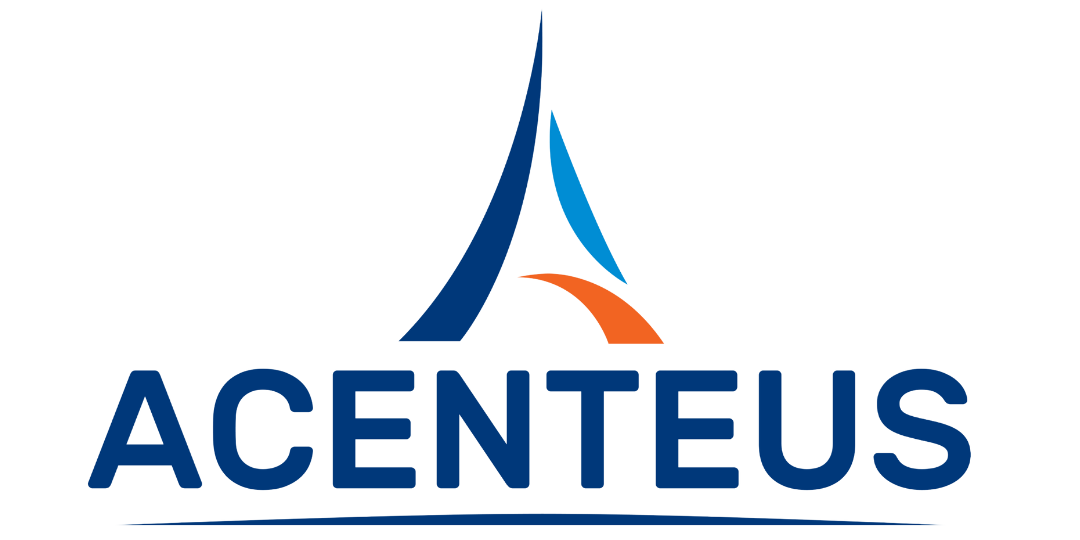
The change from December to January signifies the conclusion of the year-end battle for people who work in finance and accounting. The procedures carried out at the end of the accounting period are referred to as year-end. At this point, the books are closed for the year for the last time, and any corrections and reconciling entries that are required are made so that the financial picture of the previous 12 months is accurate.
This could entail year-end filing obligations for public corporations, but private companies might need to give executives or directors financial reporting. Regardless of the closing methods used the rest of the year, the year-end close is frequently the most time-consuming and difficult task, and completing it successfully requires developing a game plan.
Is year-end accounting important?
A key component of accounting for any firm is year-end accounts, which are an essential tool for assessing the financial health of an organisation. Profit and loss statements, cash flow statements, and balance sheets are just a few of the financial documents that offer an accurate view of a company’s finances. These financial reports assist firms in making wise decisions and identifying areas that require adjustment or improvement in order to be more successful.
Also, year-end accounts are crucial in ensuring compliance with a number of regulatory requirements. Businesses are better able to keep track of their tax liabilities and fulfill their compliance duties by offering a thorough overview of financial performance. Year-end accounting essentially helps to guarantee that organisations maintain their financial resilience by giving them access to the vital financial information that may guide strategic planning and decision-making. Thus, year-end accounts must be given top priority by any accounting business that wants to assist clients in maintaining and improving their financial health.
Year-end can feel like an impossible mountain to scale, but with the appropriate plan, it can be as simple as possible. When developing your plan for the end of yet another year, keep these suggestions in mind.
1. Set preparation as a priority
There is no room for error when it comes to correctly closing your accounts at year’s end, which is a significant matter in accounting departments. Instead of hoping and praying, put the necessary effort into preparing your team.
Now is the time to inform new hires about the year-end closing process, including how it may differ from month- or quarter-end closing procedures, what reporting is necessary, and what kinds of due dates are anticipated, if there has been any employee turnover during the year, which is likely, especially for larger companies or companies on a growth trajectory.
When a new employee is hired, a new procedure or software is put into place, training doesn’t stop. Instead, it should be an ongoing effort, and part of that entails making sure everyone is ready for any problems that might come up. Use a combination of best practises and prior experience, such as issues that occurred during previous closing periods and how they were resolved, to the best of your ability to keep your staff informed.
It might be difficult to keep track of year-end procedures and workflows. Your department can maintain focus and keep things moving forward according to schedule by using a workflow automation tool.
2. Establish a countdown
Knowing how much time is left and what has to be achieved before time runs out can be a very significant component of time management. A countdown that guides the closing process may seem like the doomsday clock. Maintain a countdown that will keep everyone focused on the task at hand to ensure that no one on your team is unwillingly or unintentionally neglecting what the road ahead has to offer.
There will be significant chores that need to be finished for many businesses before the year officially ends. Creating templates, adding current data, creating scenarios in a financial database programme, or simply organising documents are all examples of how to do this. Build these kinds of duties into your calendar as much as you can to ensure a smooth start to your procedure once the year comes to a close. Additionally, certain businesses could have rigid reporting deadlines at the year’s conclusion. In these situations, a countdown shouldn’t finish when the year is over; instead, it should include all impending deadlines and necessary tasks.
Although a year-end countdown may seem like the pressure is on, it’s a terrific method to stay organised and keep your eyes on the target. You can navigate the area with ease once the preparation work is finished and your team knows exactly what to expect and when to expect it.
3. Stay Calm and Makeup
Few things in accounting are as crucial as making sure the numbers balance. Even the tiniest deviations can be significant, causing your books to become out of balance and seriously impeding your ability to finish the close on time. No matter how carefully you prepare, there may still be issues with your partner. There will be inaccurate reporting of data, typographical errors in entries, lost invoices, and account number confusion. Even the greatest controls cannot guarantee that errors won’t occur; for this reason, reconciliation is a crucial step in the closure process.
All figures must match up, all debits and credits must balance, and all accounts must accurately show the amounts related to revenue and expenses for your books to be complete and correct. It’s simple to become frustrated when faced with a problem that looks insurmountable, whether it be accounts that don’t tie out or debit and credit balances that don’t match up. However, it’s crucial to remain composed and continue your efforts at reconciliation in the end. A proper strategy for reconciliation helps guarantee that every number you report is true. There are always reasons why numbers don’t match, from human mistakes to inaccurate invoicing.
Reconciliation can be a labor-intensive operation that is difficult to handle manually for larger businesses with a high volume of transactions. In these situations, the appropriate document management software can be a huge help in organising every aspect of your organisation.
4. Maintain the Accuracy of Your Chart of Accounts
Your chart of accounts plays a crucial role in the proper organisation and reporting of the various revenue streams and expense categories that have an impact on your company. A chart of accounts can, however, quickly become out of control over time. To be as accurate as possible throughout the year, adding new accounts can play a significant role.
To properly document expenses on a more detailed level, break out new revenue streams, separate items like one-time payments, or do anything else that requires a special entry that doesn’t naturally fit into any existing account, parent and child accounts can be created.
However, adding to a chart of accounts continuously frequently results in chaos, creating a disorganised system that doesn’t meet an organisation’s demands for tracking revenue and expenses. Make sure your chart of accounts is accurate and up-to-date before plunging into the closing process. To ensure that all information is placed in the appropriate areas for the most accurate result possible, make sure all of your staff are aware of which accounts connect with particular actions. During this procedure, validate that:
- The reporting requirements apply to all account types, including income, liabilities, assets, and expenses.
- All accounts have clear, understandable names, and there aren’t any duplicates.
- Accounts that are inactive, underused, or duplicates are deleted.
- Based on the account type and intended use, all entries relating to each account are valid and accurate.
5. Study the employee data
Employee-related costs account for a sizable share of operating costs in almost every organisation. Payroll, benefits, and other costs can add tens of thousands or even hundreds of thousands of dollars to operational expenses for small to midsize businesses each year. It’s simple to assume that the payroll department is correctly classifying all connected expenses, but there’s a potential that important information about employee pay and benefits isn’t being handled correctly.
Make auditing personnel records a key component of your checks as part of your closing procedure. Due to the complexity of the factors that go into determining employee-related expenditures, mistakes can be expensive, both in terms of proper reporting and potential issues with how taxes or benefits are earned and paid. For instance, improper tax and insurance deductions may cause issues both internally and externally, such as the imposition of fines and the incurrence of other costs that may have been preventable had a thorough review procedure been in place.
The cost of employing staff also frequently includes expense claims for businesses that mandate travel and entertainment. However, because these transactions typically have little cash amounts, it’s normal to submit expense claims without giving them any thought. However, making mistakes with employee reimbursements can be expensive and unnecessarily hurt the company’s bottom line. Spend some time reviewing the expenditures that have been deducted from the company’s earnings at the end of the day to verify sure they were legitimate and to check that no invoices were processed twice or that the expense cap wasn’t exceeded.
6. Schedule bookkeeping time
Regular bookkeeping is essential to the proper operation of any accounting or financial institution, but this is never more true than towards the conclusion of the accounting year. Your numbers are practically meaningless without a thorough understanding of the year’s activities and readily available supporting documentation to back your entries and invoices. Unfortunately, this may entail mountains of documentation for some businesses to sift, arrange, and categorise before the year is up.
You’re not the only one who finds the thought of handling a tonne of papers by hand tiring. For this reason, a lot of astute accounting and financial reporting teams are moving away from paper and towards technology. It is simple to organise, store, update, and manage all information that is related to the operation of a firm using an accounting automation system that includes document management. The right accounting automation software can save time and money throughout the year, laying the groundwork for a smooth and error-free close. It does this by streamlining document searches, enhancing the approval process, and linking documents together by order, invoice number, or any other crucial criteria. Accounting activities can be as organised as feasible with the use of automation. The following are the main advantages of automation:
- Enhanced organisation and search skills with less room for error
- Improved interactions with suppliers and partners
- Reduction of fines for late or missed payments
- Quicker approval processes
- Quick access to data to assist audit query entries
- A clearer understanding of the monetary flows coming in and going out
Another crucial step in getting ready for year-end is performing data backups. Maintaining correct records requires keeping information secure, and keeping thorough periodic backups is strongly encouraged to prevent data loss due to security breaches, computer failures, or human mistakes. Make certain that any ERP data is included in your backups and that the data being backed up is accurate and relates to any support that has been archived using a document management system.
7. Make this year’s end successful
In an ideal scenario, all the data from your systems would be tied together, eliminating the need for time-consuming reconciliation procedures. It is simpler to avoid mistakes the more careful you are with your organisational decisions, such as data storage and backup generation.
No accountant enjoys year-end close, but it’s an essential phase of the business cycle that doesn’t have to be as challenging as it might seem. The correct accounting automation tools, such as document management software, can increase efficiency and improve organization, providing a way to speed up work without sacrificing accuracy. Accounting automation might be the final link you need to remove the pain of closing by giving you a tool to make sure your team is as prepared and organised as possible. Put the necessary practises and tools in place to make this year’s closure the finest one yet, rather than approaching it with fear and trepidation.
Make learning more about how to enhance your processes a goal for this year.
To learn how Acenteus can enhance your year-end experience, schedule a demo now.










